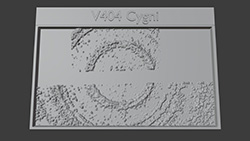CXC Home | Search | Help | Image Use Policy | Latest Images | Privacy | Accessibility | Glossary | Q&A
1
X-ray & Optical Images of V404 CygniImage Credit: X-ray: Chandra: NASA/CXC/U.Wisc-Madison/S. Heinz et al.; Swift: NASA/Swift/Univ. of Leicester/A. Beardmore; Optical: DSS; Sonification Credit: NASA/CXC/SAO/K.Arcand, SYSTEM Sounds (M. Russo, A. Santaguida)
Material surrounding a black hole can periodically generate bursts of light including X-rays. In V404 Cygni, a system with a black hole and companion star in orbit around each other, these bursts of X-rays have “echoed” off dust and clouds in interstellar space. These composite images show X-rays from Chandra and Swift plus an optical image from the Digitized Sky Survey. [Listen to the sonifications here].
2
Illustration of Ring ProductionCredit: Univ. of Wisconsin-Madison/S.Heinz
This artist's illustration shows in detail how the ringed structure seen by Chandra and Swift is produced. Each ring is caused by X-rays bouncing off of different dust clouds. If the cloud is closer to us, the ring appears to be larger. The result is a set of concentric rings with different apparent sizes depending on the distance of the intervening cloud from us.
3
3D Printable Files: V404 Cygni Tactile Plate (3D Print Credit: NASA/CXC/A. Jubett, using software by Tactile Universe/N. Bonne & C. Krawczyk & Blender)
V404 Cygni is a binary system where a stellar-mass black hole is in orbit with a “normal” star. This tactile plate depicts V404 Cygni as a physical relief map based on the intensity of X-ray data captured by Chandra. The file for this plate can be downloaded and 3D-printed for learners to touch.
At the very center of the V404 system is a black hole (which cannot be felt as it is not visible in the image) surrounded by material that has produced bursts of radiation, or light. These bursts expand outward in concentric rings which reflect off gas and dust clouds. The rings of radiation are grainy and blurred in texture, like curved tire marks left in wet snow. The smallest ring, closest to the center, is tightest and brightest. The largest ring, furthest from the core, is most faint and appears to have dissipated.
At the very center of the V404 system is a black hole (which cannot be felt as it is not visible in the image) surrounded by material that has produced bursts of radiation, or light. These bursts expand outward in concentric rings which reflect off gas and dust clouds. The rings of radiation are grainy and blurred in texture, like curved tire marks left in wet snow. The smallest ring, closest to the center, is tightest and brightest. The largest ring, furthest from the core, is most faint and appears to have dissipated.
Return to: 'Listen' to the Light Echoes From a Black Hole (November 21, 2022)











